Ukrainian Paska Bread, also referred to simply as Easter Paska Bread is a traditional sweet bread made in spring around Easter. You will find many variations of this recipe, some with icing, some without. Mine includes plump raisins and ornate decorations on top.
Easter Paska Bread is, hands-down, my favourite Easter food tradition. The usual suspects – perogies, cabbage rolls, perishke – all make an appearance, of course. But it’s the Paska that I fill up on. It’s usually force fed to me by my Baba along side a cup of tea. In all fairness, I do love the stuff (and my Baba) so it’s not entirely torturous.
Back home in Winnipeg, and in most of Manitoba, you can find fresh baked Paska at any grocery store at Easter. Here in Saskatchewan, not so much. I may have seen it once or twice in the past, but it’s not nearly as prevalent as back home. So if I want it, I have to make it myself.
What is Easter Paska Bread?
- Paska is an Easter bread with Eastern European roots. It’s made with a soft dough enriched with eggs, butter and sugar (you know, the good stuff). The enriched dough is made with lots of eggs and makes it quite rich when compared to other sweet doughs. This type of enriched dough is very similar to a Babka or Brioche.
- Occasionally, you will find the loaves topped with ornate braids, twists and swirls or other religious symbols. I’m fond of the addition of raisins, too, but it’s completely optional.
- There are lots of variations of this recipe. I’ve seen lots that rely on baking the dough in old metal coffee cans, or topped with icing and sprinkles. For me, I’ve always just had a round loaf, no icing, no sprinkles. That’s how I prefer it.
Let’s Talk Ingredients
- Yeast: I use Instant/Quick rise yeast in all my bread recipes. With this type of yeast, you do not need to proof it in warm water/milk until foamy. You simply mix it in with the dry ingredients, then add the wet ingredients. Instant Yeast is a finer than Dry-Active yeast and dissolved and absorbed easier. If you are using Dry-Active yeast, you will need to dissolve the yeast in warm liquid first.
- Raisins: Raisins are optional however, growing up, our Paska always had raisins. Make sure your raisins are nice and plump and not dry and hard.
- Orange Zest: Citrus zest adds a beautiful subtle citrus flavour to this bread. It’s subtle enough to know it’s there without being overwhelming. I mention in the ingredients that it’s optional but I highly suggest you add it.
Tips for making Ukrainian Paska Bread
- The egg wash before baking is crucial if you want to achieve that beautiful, glossy browned crust – don’t skip it!
- It’s hard to find a round baking dish with high sides, so bake this off in whatever vessel you have. Loaf pans work great – you’ll have to adjust the time, so watch it carefully. If you go with these smaller baking pans, you’ll just have smaller loaves instead of one giant boule. You can also source round paper baking molds online. The general consensus with Paska is that is should be baked high and round.
- The ornate dough decorations on top are optional as well. The Ukrainian Paska Bread I grew up eating never had the fancy decorations on top, but I enjoy making them, so I include them.
Paska is best when it’s fresh out of the oven and still a touch warm. Cut a few awkwardly large slices, slather on some butter, (or in my sweet nephews case, some jam) and indulge in my favourite Easter treat.
Looking for other Easter treats?
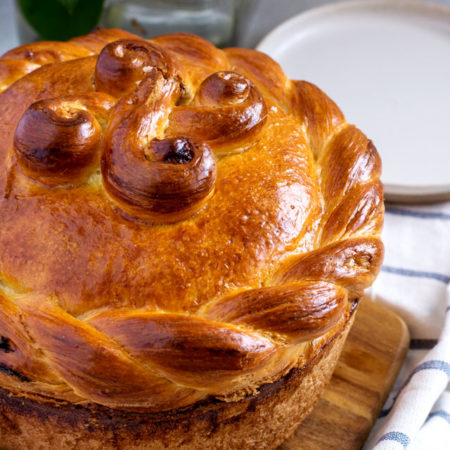
Ingredients
- 1 cup whole milk
- 1 cup raisins *optional
- 4 cups all-purpose flour
- 1/4 cup sugar
- 2 1/4 tsp instant yeast**
- 1 tsp salt
- 2 eggs
- 1/4 cup butter melted
- 1 tsp each grated orange zest and grated lemon zest optional
- 1 egg + splash of water for egg wash
Instructions
- In a small saucepan, add the milk and heat over medium heat until scalded (reaches 180 degrees F). Remove from the heat. Add the raisins to the hot milk and set aside.
- In a large bowl, mix together flour, sugar, yeast** and salt and whisk to combine.
- Add in the milk, raisins, eggs and melted butter. Add orange and lemon zest if using. Mix with a spoon until a rough dough is formed. Dump onto the counter and knead with your hands until a soft, cohesive dough is formed, about 5-8 minutes.
- Lightly oil a large bowl. Transfer the dough to the bowl and allow to rise for about 3 hours in a warm location.
- After 2 hours, or until the dough has doubled in size, punch it down. Cut off about 250 grams (very small handful) of dough for decorations.
- Form the remaining dough into a ball and place into a greased, round baking dish, about 8 inches wide and 4 inches deep.
- Form the remaining dough into decorations. I like to make braids, twists, and swirls. Use toothpicks to hold in place.
- Allow the dough to rise for about another hour.
- Meanwhile, preheat the oven to 350 degrees F.
- Whisk together egg and water, and brush on the risen dough.
- Bake for 35-40 minutes. If the top gets too brown, cover with foil.
- Let cool in the pan. Once it's cool enough to handle, remove from the pan. Cool completely and store in an airtight container for up to a week.
Nutritional calculation was provided by WP Recipe Maker and is an estimation only. For special diets or medical issues please use your preferred calculator
Notes
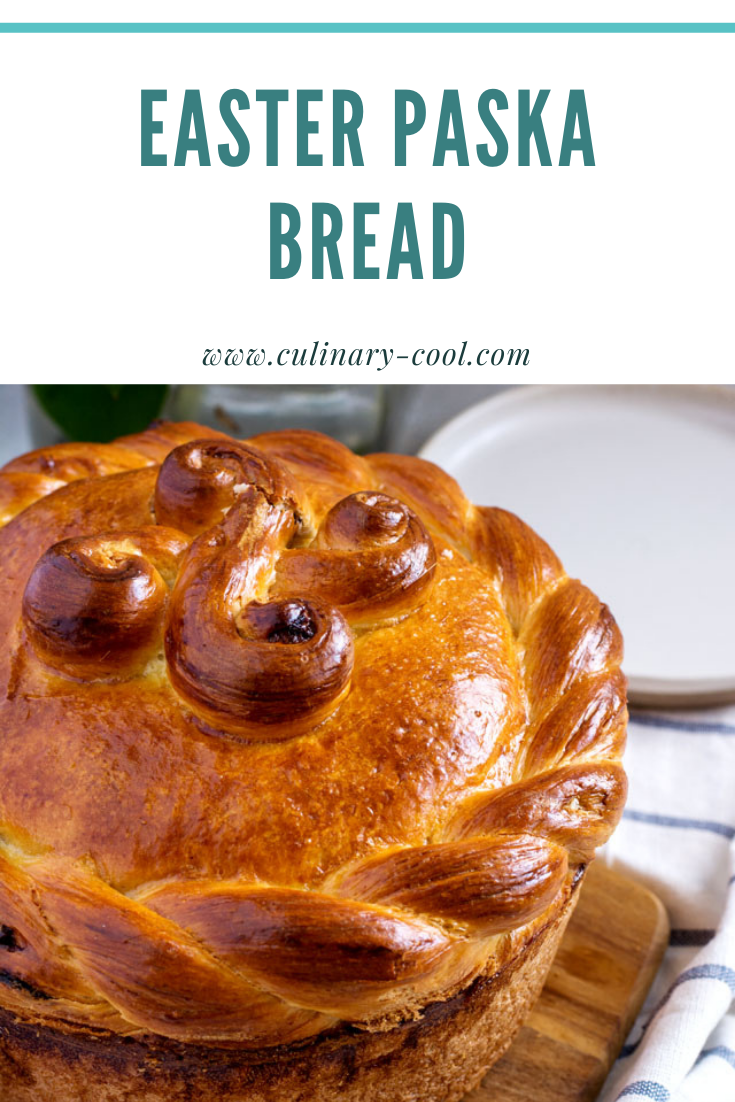
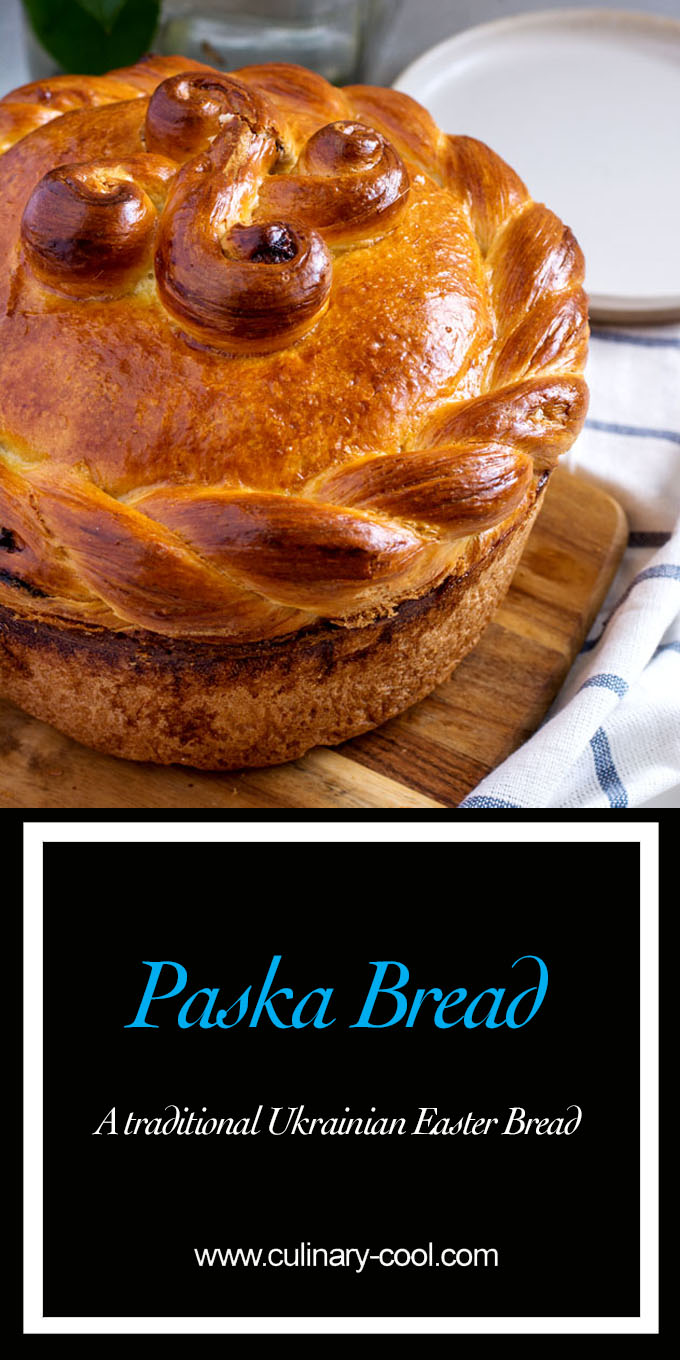
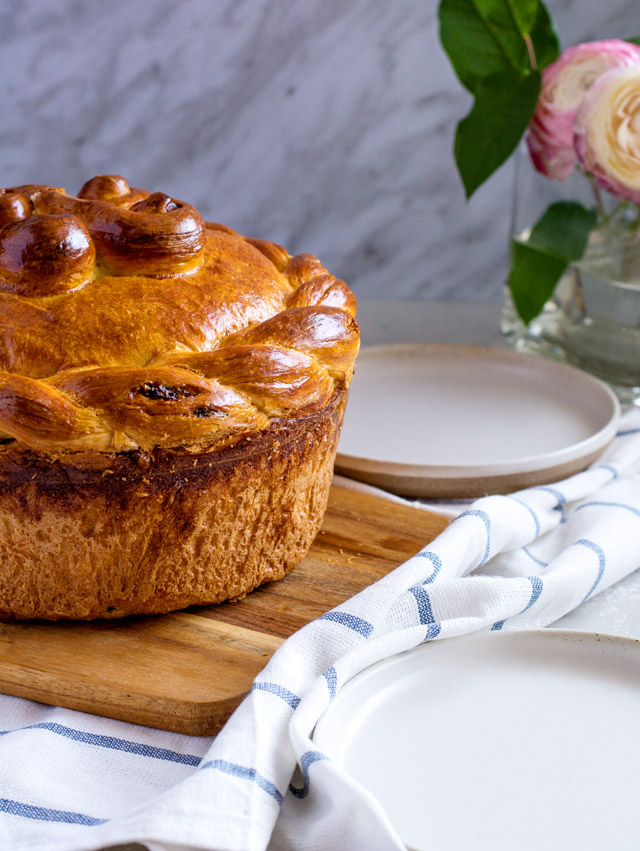
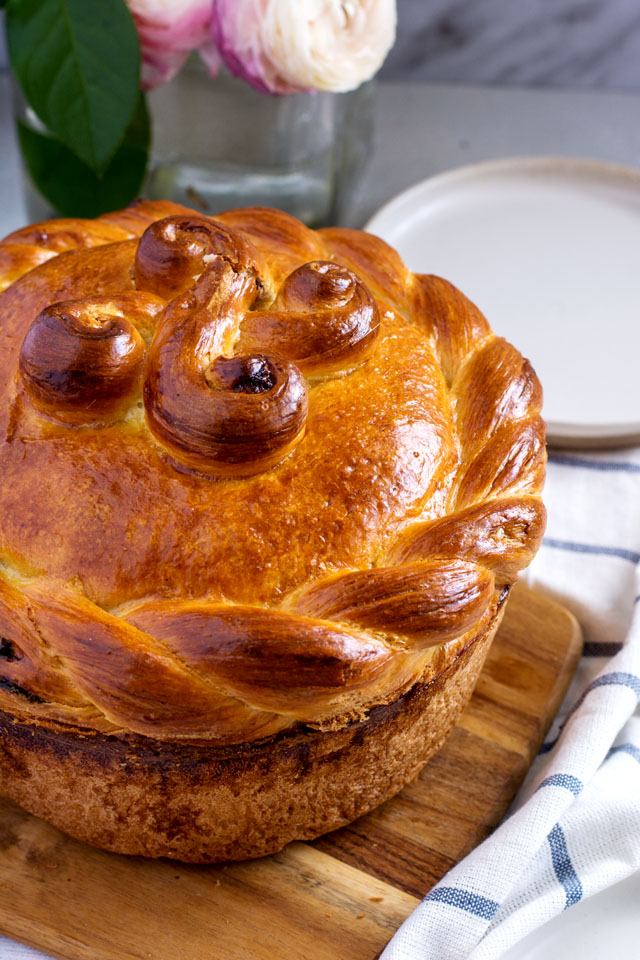
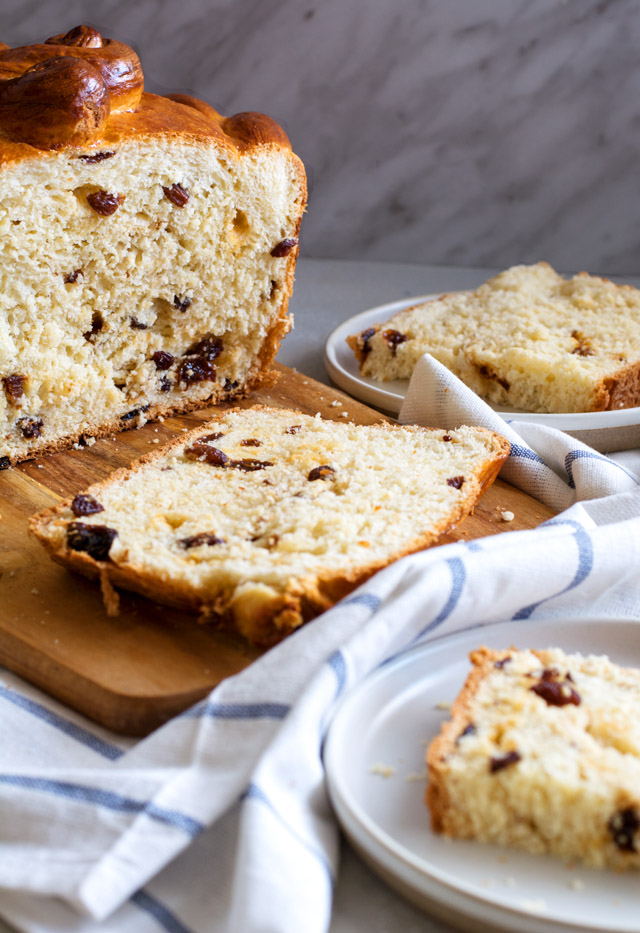
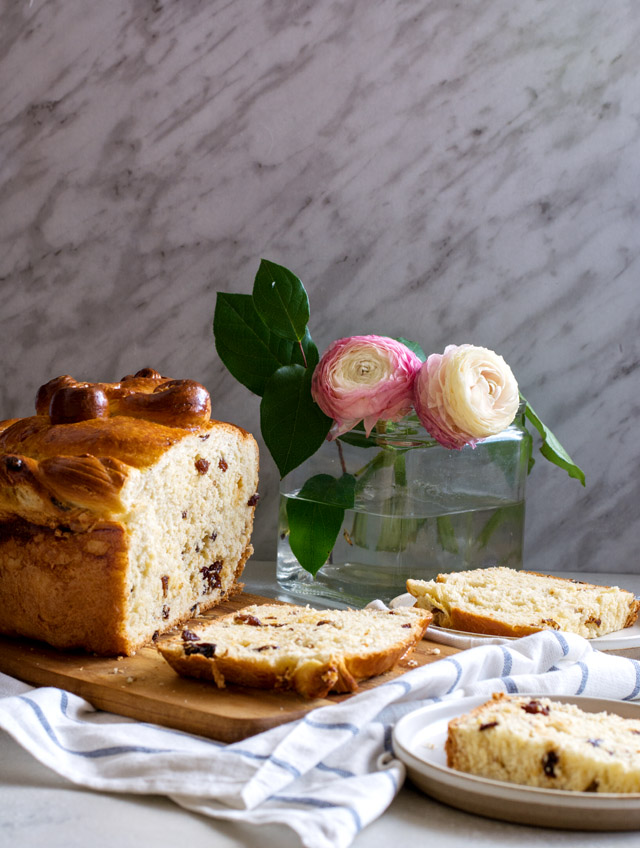
What a spectacular photo. My oh my. I see the love you have for Paska Bread. Love this post.
This looks very similar to a the German raisin bread (Rosinenbrot) my father makes every year! This has me all motivated to try and bake this tomorrow!
It turned out beautifully. Rich and dense and not too sweet. Thank you for sharing your family’s recipe.
This is the first time ever I made Easter bread and my family and I just Love this recipe . My husband was very eager to share it with his family. This will be a must have at our house at Easter time . Thank you for sharing it
It makes me so happy to hear that! I’m thrilled you and your family loved it!
Hi there,
I was wondering what dimensions your pan was — I am trying to figure out what kind of pan I need to get a shape like this.
Thanks very much!
Michael
Hi Michael, in step 6, I list my pan dimensions as 8 inches wide and 4 inches deep.
I actually didn’t use this recipe as I have a similar one that I learned to make when I was 10. I would suggest using light cream and gold raisins to bake for a richer dough. The golden raisins are sweeter and plumper. Otherwise thank you for sharing a very traditional Ukrainian paska recipe.
Ooos! I replied earlier but forgot to mention that I substitute honey for the sugar.
I made this recently and it was perfect
I’m thrilled to hear that, Jenny!
Love this recipe and what’s even better it’s from a fellow Manitoban
Hi Jean! So glad you like it!